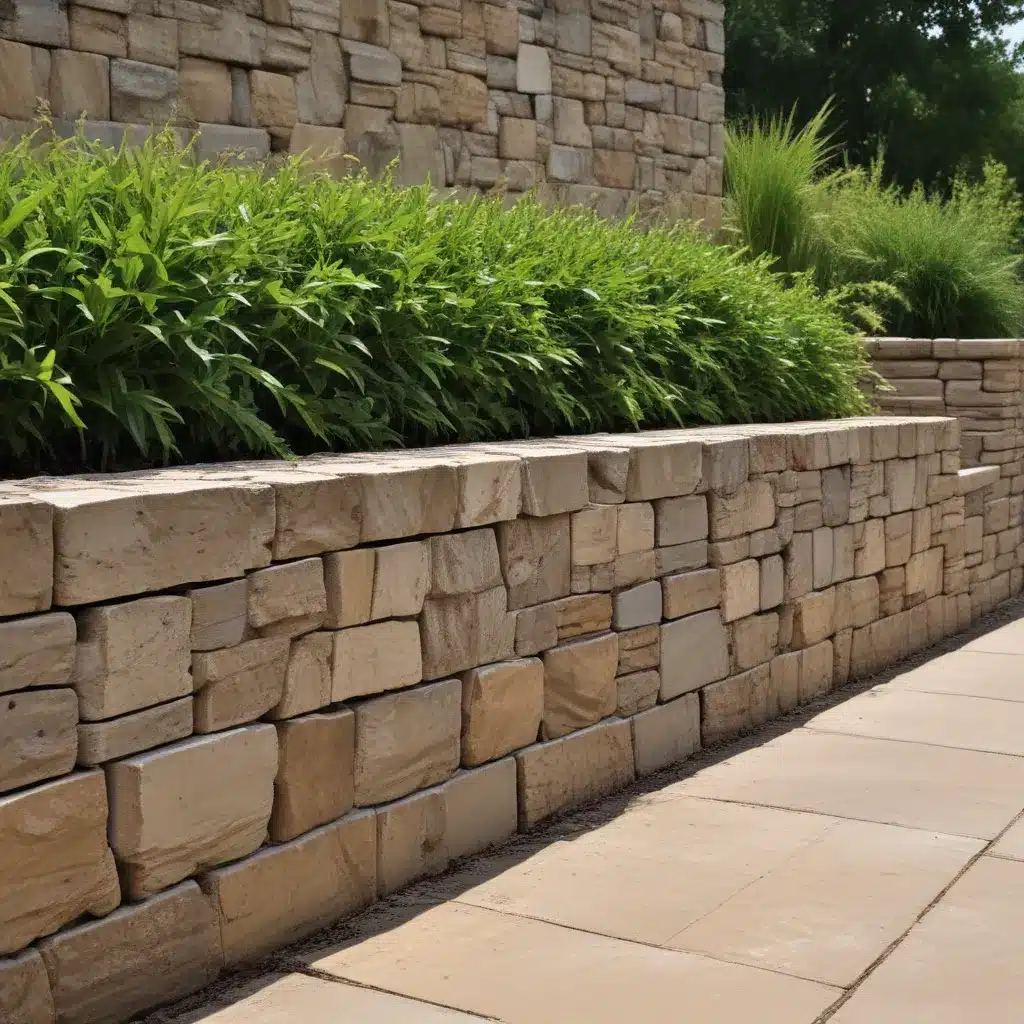
Retaining walls have long been a staple in landscape design, serving both practical and aesthetic purposes. Beyond their structural role in stabilizing slopes and preventing soil erosion, these versatile elements can elevate the beauty of any outdoor space. Whether you’re looking to create terraced gardens, define distinct zones, or add visual interest, retaining walls offer endless possibilities for transforming your landscape.
Retaining Wall Designs
Contemporary Retaining Wall Styles
Embrace the modern aesthetic by incorporating sleek, minimalist retaining wall designs. Opt for clean lines, sharp angles, and bold materials like concrete or weathered steel. These contemporary styles can create a striking contrast against the natural surroundings, adding a touch of urban sophistication to your outdoor living space.
Traditional Retaining Wall Aesthetics
For a more timeless appeal, consider traditional retaining wall styles that blend seamlessly with the surrounding landscape. Natural stone, such as fieldstone or flagstone, can lend a rustic charm, while brick or mortared stone can evoke a classic, stately look. These materials complement traditional architectural styles and create a harmonious integration between the built and natural elements.
Eco-Friendly Retaining Wall Options
In line with the growing emphasis on sustainability, eco-friendly retaining wall materials are gaining popularity. Recycled concrete, reclaimed wood, or gabion walls (wire cages filled with stones) offer environmentally conscious solutions that reduce the environmental impact of your landscaping project. These options not only contribute to a greener landscape but also showcase your commitment to sustainability.
Functional Benefits of Retaining Walls
Slope Stabilization and Erosion Control
One of the primary functions of retaining walls is to provide structural support and prevent soil erosion on sloping or uneven terrain. By strategically placing these walls, you can effectively manage water runoff, minimize soil loss, and create a stable, level surface for your outdoor living spaces.
Space Optimization and Leveling
Retaining walls can also help you maximize the usable space in your yard by creating terraced gardens, raised planting beds, or leveled areas for patios and seating. This not only enhances the visual appeal of your landscape but also increases the functional utility of your outdoor space.
Drainage and Water Management
Incorporating retaining walls into your landscape design can also play a crucial role in managing water drainage. By directing the flow of water and preventing pooling, these structures can help mitigate flooding and ensure proper irrigation for your plants and landscaping features.
Aesthetic Considerations
Textures and Finishes
To create visual interest and seamlessly integrate retaining walls into your landscape, consider the use of textures and finishes. Natural stone, such as fieldstone or flagstone, can lend a rustic, earthy feel, while smooth, precision-cut stone can offer a more refined, contemporary look. Integrating a variety of textures, colors, and patterns can add depth and character to your retaining walls.
Integrated Landscaping
Incorporating thoughtful landscaping elements around your retaining walls can significantly enhance their aesthetic appeal. Strategically placing plants, such as cascading vines, ornamental grasses, or colorful flowering shrubs, can soften the hard lines of the walls and create a harmonious, naturalistic setting.
Lighting and Accents
Illuminating your retaining walls with strategically placed lighting can transform your outdoor space, creating a warm and inviting ambiance. From subtle path lighting to dramatic uplighting, the addition of lighting can highlight the texture and features of the walls, enhancing their visual impact. Incorporate decorative accents, such as planters or sculptures, to further accentuate the visual interest of your retaining walls.
Engineering and Installation
Structural Integrity
Ensuring the structural integrity of your retaining walls is paramount. Proper engineering, design, and construction techniques are essential to guarantee the long-term stability and safety of these features. Consult with experienced professionals who can assess the site conditions, soil characteristics, and load-bearing requirements to ensure your retaining walls are built to withstand the specific demands of your landscape.
Site Preparation
Preparing the site for retaining wall installation is a crucial step in the process. This may involve grading, excavation, and the creation of a stable, well-drained foundation to support the weight of the walls and the surrounding soil. Proper site preparation lays the groundwork for a successful and long-lasting retaining wall installation.
Installation Techniques
The installation of retaining walls requires specialized knowledge and techniques to ensure optimal results. Factors such as the choice of materials, the construction method (e.g., mortared, dry-stacked, or mechanically stabilized), and the incorporation of drainage systems all play a significant role in the overall performance and longevity of the walls. Engaging experienced contractors who are well-versed in these techniques can help you achieve a flawless, visually appealing, and structurally sound retaining wall installation.
Maintenance and Longevity
Durable Materials
Selecting high-quality, durable materials is essential for the long-term performance and aesthetic appeal of your retaining walls. Natural stone, reinforced concrete, and engineered masonry blocks are some of the most common and reliable options, offering exceptional strength, weather resistance, and low maintenance requirements.
Weatherproofing Strategies
Protecting your retaining walls from the elements is crucial for preserving their structural integrity and visual appeal. Implementing weatherproofing strategies, such as proper drainage systems, sealants, and regular inspections, can help mitigate the effects of water, frost, and other environmental factors that can compromise the walls over time.
Ongoing Upkeep
Maintaining your retaining walls through regular inspections, cleaning, and minor repairs can extend their lifespan and ensure they continue to enhance the beauty of your outdoor space. Addressing any issues, such as cracks, vegetation growth, or soil erosion, in a timely manner can prevent more significant problems from arising and help your retaining walls remain a lasting and functional feature of your landscape.
By considering the diverse design possibilities, functional benefits, and long-term maintenance requirements, you can reimagine your outdoor space with retaining walls that seamlessly integrate form and function. Whether you opt for contemporary, traditional, or eco-friendly styles, these versatile landscape elements can transform your yard into a visually captivating and highly functional oasis. Consult with the experts at Cincinnati Patiopaving to bring your retaining wall vision to life and elevate the overall appeal of your outdoor living space.

